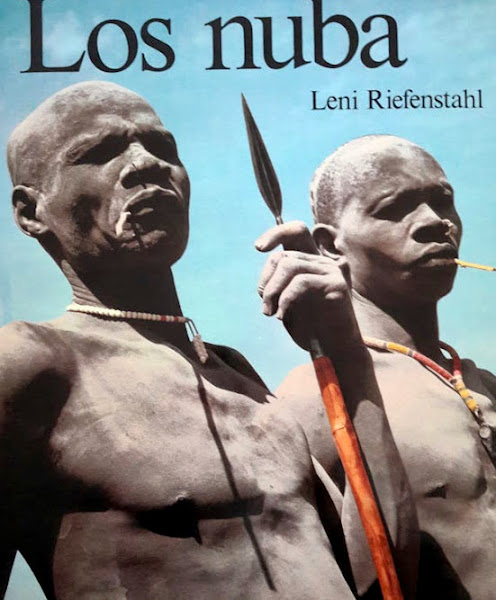
From 1962 till 1977 Leni Riefenstahl had been living as the first white woman with a special permission issued by the Sudanese government in the remote valleys of the central Sudan among the mysterious Nabu tribes, had studied their way of life and recorded it on film in pictures of unusual fascination for eternity. Particularly the circumstance that through the advance of civilization the Nuba's way of life is approaching its irreversible end is giving these picture documents a unique anthropological, ethnological and cultural-historical importance.
For thousands of years Nuba have occupied most of what is known today as Kordofan Province. But because of successive attacks by various Arab tribes who invade Sudan in 16th century on wards, they retreated to the mountains of South Kordofan which became their permanent homeland and took the name of "Nuba Mountains". During the British rule in Sudan (1896 -1956) the Nuba Mountainsregion was a separate province with its own administration and its capital at Talodi until amalgamated in 1929, into the larger Kordofan. It then remained a 'closed district' until shortly before independence in 1956.
Who are the Nuba?
The Nuba people who live in the geographical centre of Sudan are the largest of many non-Arab groups in Northern Sudan and are the descendent of Kush kingdom of 8th century. They are in fact an amalgam of dozens of different tribes with different cultures and languages.
Since the outbreak of the civil war in 1983 there have been living in the central Sudan in the Kordofanian province in the Nuba mountains still between 8,000 and 10,000 Masakin Quisar Nuba of different language groups and far from any civilization out of all Nuba tribes counting about half a million people all together.
The Nuba - Who are they?
First Exhibit. Here is a book of 126 splendid color photographs by Leni Riefenstahl, certainly the most ravishing book of photographs published anywhere in recent years. In the intractable desert of the southern Sudan live about eight thousand aloof, godlike Nuba, emblems of physical perfection, with large, well-shaped, partly shaven heads, expressive faces, and muscular bodies which are depilated and decorated with scars; smeared with sacred gray-white ash, the men prance, squat, brood, wrestle in the arid sand. And here is a fascinating layout of twelve black-and-white photographs of Leni Riefenstahl on the back cover of the book, also ravishing, a chronological sequence of expressions (from sultry inwardness to the grin of a Texas matron on safari) vanquishing the intractable march of aging.
https://gemini.google.com/share/f81cf46b3b34
SUSAN SONTAG
The first photograph was taken in 1927 when she was twenty-five and already a movie star, the most recent are dated 1969 (she is cuddling a naked African baby) and 1972 (she is holding a camera), and each of them shows some version of an ideal presence, a kind of imperishable beauty, like Elisabeth Schwarzkopf’s, that only gets gayer and more metallic and healthier-looking with old age. And here is a biographical sketch of Riefenstahl on the dust jacket, and an introduction (unsigned) entitled “How Leni Riefenstahl came to study the Mesakin Nuba of Kordofan”—full of disquieting lies.
Fascinating Fascism Full PDF >>>
WHERE THERE’S A WILL The rise of Leni Riefenstahl >>>



































.jpg)


.jpg)














.jpg)